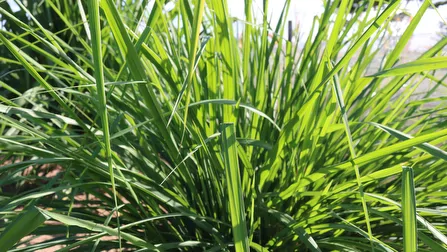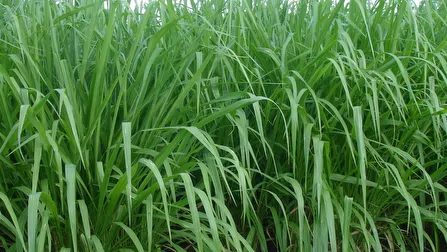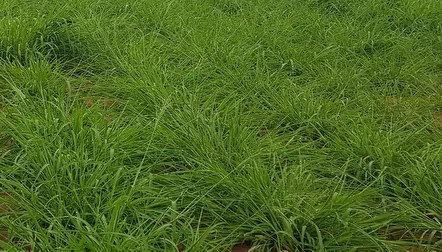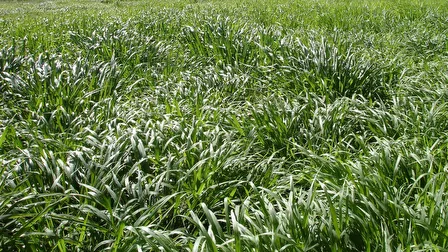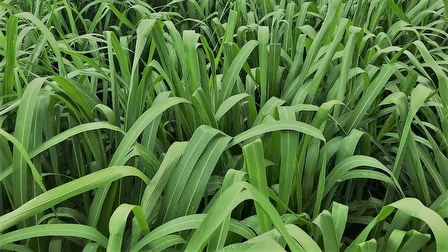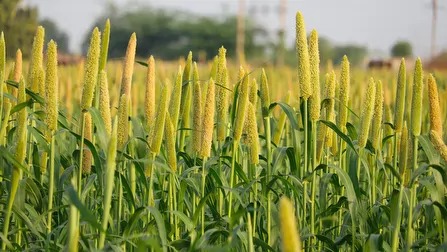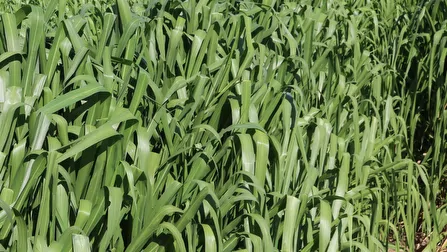
Indicação
Indicada para solos de alta fertilidade, produz grande quantidade de forragem e de boa qualidade nutricional. É indicada para bovinos de cria, recria e engorda, produção leiteira e também, equinos e ovinos. Pode ser utilizado para pastejo direto, como capineira de corte e também para silagem.
Megathyrsus maximus cv. Tobiatã
Panicum maximum cv. Tobiatã
Alta fertilidade
Pastejo direto e silagem
18 a 25 t/ha/ano de matéria seca (M.S.)
12 a 14%
2,50m
65 a 70%
Boa
Alta
Média
Perene
Origem
A cultivar teve origem na linhagem K-187-B, proveniente da Costa do Marfim/África, em 1977. Foi descrito, avaliado e lançado comercialmente pelo IAC – Instituto Agronômico de Campinas.
Características Agronômicas
É uma espécie forrageira exigente em fertilidade do solo. Apresenta grande produção de forragem com boa qualidade nutricional.
Utilização e Manejo
O Tobiatã, é uma cultivar indicada para solos de alta fertilidade, corrigidos e adubados. Possui um bom potencial de produção de forragem e com boa qualidade nutricional, podendo ser fornecido a bovinos de cria, recria e engorda, leite, e ovinos e caprinos. Pode ser utilizado para pastejo direto, como capineira de corte e também para silagem. O manejo deve ser feito intensificando o pastejo, principalmente durante o período chuvoso, com intervalo de descanso médio de 25 dias, com altura de saída de até 15 cm de altura, evitando a produção de talos lignificados e o amadurecimento da planta.
Características Morfológicas
Apresenta folhas largas, medindo em média, 4,5 cm de largura por 80 cm de comprimento, de coloração verde-escura. Apresenta hábito de crescimento cespitoso, podendo atingir entre 2 a 3 cm de altura. As folhas possuem pouca ou nenhuma pilosidade, enquanto que as bainhas ou lígulas são densamente pilosas.
